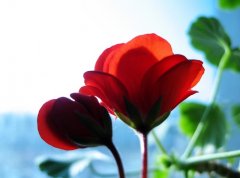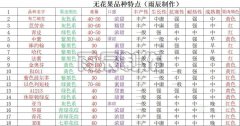Classification and cultivation methods of tea trees
my country is the first country in the world to grow tea, make tea, and drink tea. The cultivation of tea trees has a history of thousands of years.
Yuanwang tea forest belongs to the genus Camellia, is a perennial evergreen woody plant. Generally shrubs, there are also tree-type tea trees in tropical areas as high as 15-30 meters, the base of the tree circumference is more than 1.5 meters, and the tree age can reach hundreds of years.Up to thousands of years. Cultivated tea trees are often pruned to inhibit vertical growth, so the tree height is usually between 0.8 and 1.2 meters. The economic age of tea trees is generally between 50 and 60 years.
The leaves of the tea tree are oval, with serrated edges, five white flowers open between the leaves, the fruits are oblate, triangular, and the seeds are exposed after the fruits are arranged. The young leaves of the tea trees can be picked in spring and autumn to make tea, and the seeds can be squeezed., The tea tree has a fine material, and its wood can be used for carving. There are many varieties of tea trees used to produce tea, mainly in Assam, China and Cambodia.
Research on the main characters and characteristics of tea tree varieties in my country, and taking into account the habit of current variety classification, we divide the tea tree varieties into three classification levels according to the three main characteristics of tree type, leaf size and sprouting time, as the classification of tea varieties System. Classification standards at all levels are as follows:
The first-level classification system is called "type". The classification character is tree type, which is mainly determined by the height and branching habits of plants under natural growth conditions. It is divided into tree type, small tree type and shrub type.
1 Tree type: this is a relatively primitive type of tea tree. It is distributed in natural areas close to the natural conditions of the tea plant's origin, that is, tropical or subtropical regions in my country. The plant is tall, and it is obvious from the base to the upper part of the plant The main stem is raceme-like branches, with high branches and sparse leaves. The leaves are large, and the variation range of the length of the leaves is 10-26 cm. The leaf length of most varieties is more than 14 cm. The leaf fence organization is generally one layer.
2 Small tree type: This type is an evolutionary type. It is more resistant to stress than trees and is distributed in subtropical or tropical tea areas. The plants are taller, with obvious from the base to the middle of the main stem, but not the upper main stem of the plant.The branches are relatively sparse, most varieties have leaf lengths between 10-14 cm, and the leaf fence organization is mostly two layers.
3 Shrub type: This type is also an evolutionary type. It includes the most varieties, mainly distributed in subtropical tea areas. Most of the tea areas in my country are distributed. The plants are low and have no obvious main stem. They branch from the base of the plant. The branches are dense, the leaves are small, and the length of the leaves varies widely. It is between 2.2-14 cm. The length of most varieties is less than 10 hundred meters. The leaf fence organization is 2-3 layers.
- Related knowledge
- The breeding method of Huaye Biantianzhang
- How to cut dahlias
- The breeding method of cross star brocade
- Knowledge and treatment method of flower slow seedling period
- Flower top dressing method and precautions general
- The topping method of millions of small bells graphic
- The breeding method of Northern Rieger Begonia
- Three ways to make longevity flowers bloom more
- Methods of controlling scale insects
- The breeding method of Zhu Dinghong excellent summary
- The breeding method of Blue Star Beauty
 Detailed introduction of smelly hydrangea
Detailed introduction of smelly hydrangea The difference between Japanese maple and red maple | Mainly look at the leaves
The difference between Japanese maple and red maple | Mainly look at the leaves Grass Aloe, Saponified Aloe, Mosaic Aloe
Grass Aloe, Saponified Aloe, Mosaic Aloe Bnoniaceae Garlic Vine
Bnoniaceae Garlic Vine The difference between a year's fennel, a small fennel, and a spring fennel picture and text
The difference between a year's fennel, a small fennel, and a spring fennel picture and text- Rosaceae Umbrella
- Does the reticulum bloom with flowering diagram
 Asuka prickly pear blossoms
Asuka prickly pear blossoms
- Editor's recommendation
- Introduction of Nine Deaths Resurrection Grass Returning Sun Grass
- Full list of varieties of bowl lotus
- Zibao breeding picture
- Classification and cultivation methods of tea trees
- Purple calyx distance flower purple gypsophila conservation knowledge
- Cactus white sandalwood
- Introduction to China's Top Ten Famous Flowers
- Detailed introduction of smelly hydrangea
- The difference between crab claw lotus, fairy finger and fake epiphyllum
- Boxue Wanniancao







